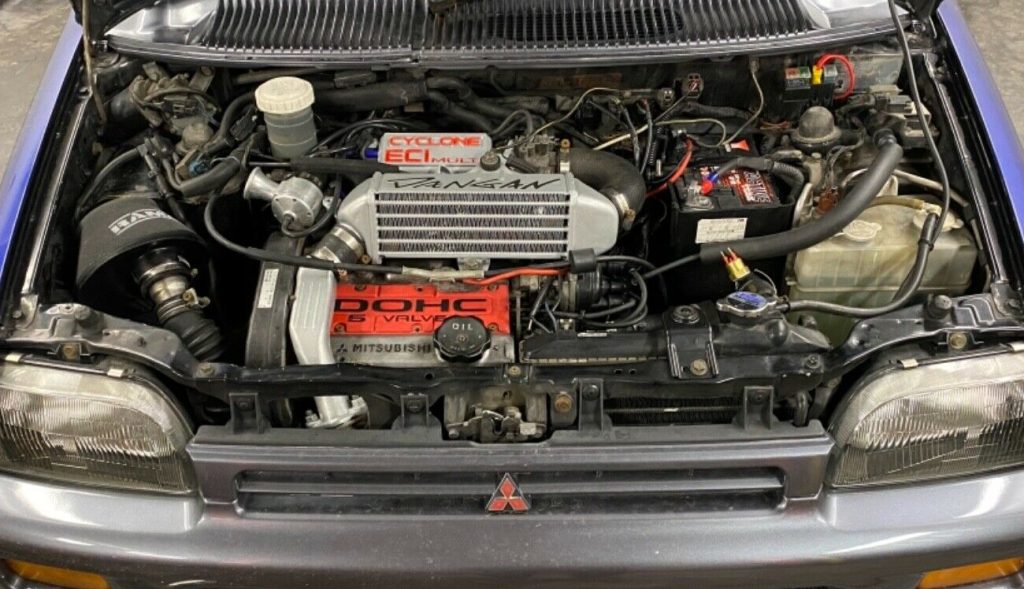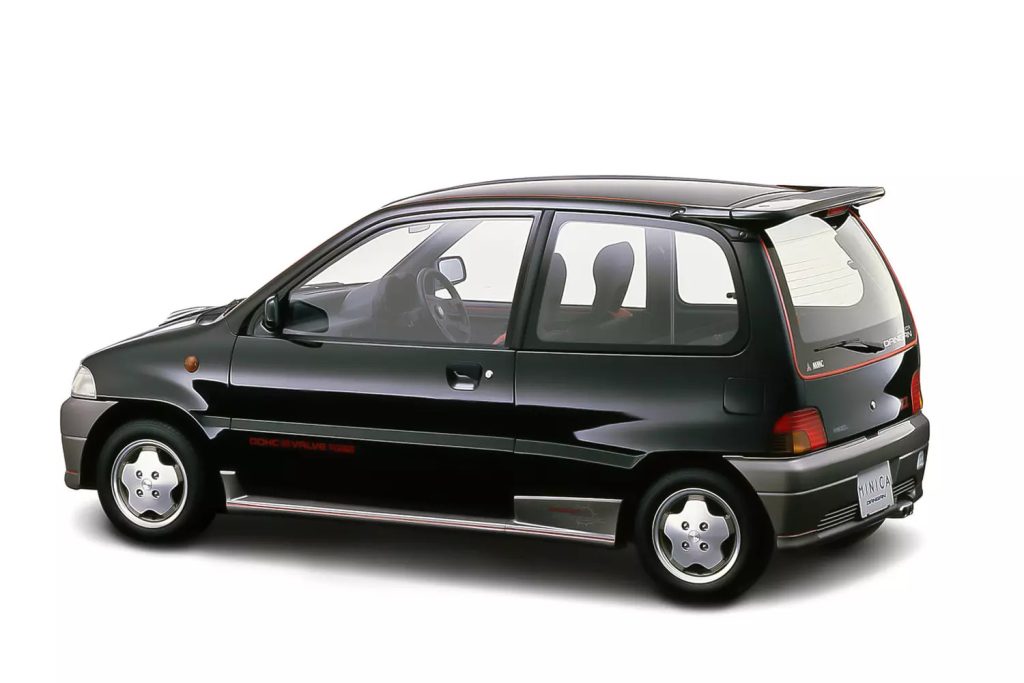If you want to know just how much money the Japanese car industry had to play with in the 1980s, consider that when Mitsubishi introduced the world’s first mass-production road car with five-valve heads in 1989, it did so not with a wild supercar or German-baiting luxury machine, but with a car displacing less capacity than many motorcycles.
Mitsubishi would abandon the technology after only a few years, with brands like Volkswagen, Toyota and Ferrari dabbling with 5v engines for longer. But with the 548cc, three-cylinder, 15-valve Minica Dangan ZZ, it got there first.

The typically loopy name is really a distraction from what was going on under the bonnet, so we’ll get that out of the way early on. ‘Dangan’ is Japanese for ‘bullet’, while ZZ, or ‘double-zee’… well, that just sounded cool.
The technology though made more sense. Just as using a pair of both intake and exhaust vales in a cylinder allowed for improved gas flow – key to extracting more power from a given capacity – a five-valve head does the same, albeit with diminishing returns compared to the steps from two to three, and three to four valves.
These diminishing returns are why six and seven valve heads never hit production – though speaking to Autocar in 1989, Mitsubishi engineer Seuchi Ohta confirmed that the company had experimented with the latter (as did Yamaha). But it deemed five valves to be optimum for the 548cc Dangan’s 62.3mm bore.

The margins were clearly small: Ohta explained that there was little benefit in engines with bore sizes only slightly larger and up to around 90mm. The aforementioned Ferrari, Toyota and Volkswagen/Audi used bore diameters of 85mm (for the F355, F360 and F50), 81mm (for the 20v 4A-GE engines) and 81mm again (the Volkswagen Group’s 1.8-litre 20v), so there’s clearly some wiggle room in this rule of thumb, but given both Ferrari and Toyota’s Yamaha-developed motors offered high specific outputs, the benefits for high-revs power were clearly more than theoretical.
That Toyota worked with Yamaha on its engines is possibly no surprise, since Yamaha was no stranger to the layout. Its F1 engines between 1989 and 1996 all utilised five valves per cylinder, while its single-cylinder YZ250F and YZ450F motocross bikes also featured five-valve heads.
As well as flow, one benefit to these engines was their capacity for high revs. While more valves means more moving components (with associated complexity and friction), the components can be smaller and lighter, and that means less inertia. Mitsubishi’s inlet valves were 30 per cent lighter than those of equivalent four-valve engines, while the use of roller rockers (operated by double overhead camshafts) and hydraulic tappets reduced friction too. In such a small engine, the resulting components looked more like parts from a mechanical watch.
The result was a turbocharged engine that revved to 9000rpm – in an economy car, in the 1980s remember – though maximum power of 63bhp was delivered 1500rpm earlier. Ferrari and Toyota’s engines were also high-revving units, and while the VW 20v engine is more of a lugger, the free-breathing head undoubtedly contributes to its healthy outputs in turbocharged form, and its ability to develop even more power when tuned.

And if the Dangan ZZ’s 63 horses sound a little lame in a modern context, bear in mind that tiny capacity. With the aid of a turbo, this was an engine that made more power than most European manufacturers’ 1-litre engines at the time, and a fair few 1.3s too.
Autocar‘s 1989 drive of the Dangan ZZ revealed flexibility and response too, though with a 620kg kerb weight to pull along, light weight probably played just as much a part as a fancy valvetrain.
If there’s a reason five-valve engines died after little more than 10–15 years, it’s that those small gains over four-valve equivalents were smaller than those wrought by improvements in manufacturing tolerances, fuel delivery, ignition, and valve timing – the latter in particular something that developed quickly in the 1990s. And the tradeoff would always be extra complexity, and its associated costs.
And there’s one more technology that has since seen even greater performance gains: turbocharging. As Road & Track wrote when exploring the death of five-valve engines, turbos remain the most effective way of admitting air to a combustion chamber, which is why they’re in the majority of modern combustion-engined cars. Throw in several more decades of engineering expertise and it’s clear where the money is better spent.
Still, in that Dangan ZZ you could enjoy both, as well as the fruits of another technology pioneered by Mitsubishi in road cars: balancer shafts. Given Mitsubishi subsequently licensed its take on the technology to several other automakers, that’s one technology that certainly didn’t prove a dead end.
Read more
Life is short and new cars aren’t as green as we’re told – so buy an old V8
Your Classics: Nathan and his rare pillarless Mitsubishi Sapporo coupé
How does fuel injection work? This slow-mo video shows you










Fab car – drove one at a Donington Park driving day way back when – also of offer was a Roller with an in car phone; still remember my brother calling my wife who was totally bemused by the whole concept of a ‘car phone’…
Fab car – still remember sampling one at a Donington Park driving day where it took a bow along with a Roller fitted with a new fangled in car phone. Still remember the call my brother made to my wife who was bemused by the ‘mobile’ concept; how times have changed… she’s on hers more than me now! (but never while driving, just as a passenger)
Hi Anthony that must have been fast little 500cc with a turbo was there many made and sold over here. Hope to see you at grimthope castle with my colt Cordia turbo.mick.